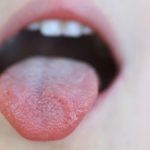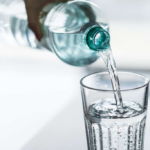Distinguishing Fresh and Chemically Treated Seafood

Distinguishing fresh, natural seafood from chemically treated seafood can be challenging as the treatment methods have become increasingly sophisticated, easily deceiving consumers. The fish may appear to have shiny, sparkling scales, a plump body, and clear eyes, but their flesh could be laden with harmful chemicals. When cooked, the fish emits an unpleasant, putrid smell and affects human health.
Let’s take a look at the comparison table below to identify the key differences between fresh, natural seafood and chemically treated seafood!
|
Fresh, Natural Seafood |
Chemically Treated Seafood |
|
|
Gills |
Pinkish-red with mucus and sometimes blood. Sticks firmly to the gill rakers. |
Pinkish-red but without mucus, and with a putrid or foul odor. Does not stick to the gill rakers. |
|
Eyes |
Clear, smooth, and taut. |
Still smooth and taut but cloudy in appearance. |
|
Body |
Elastic and bouncy, leaving no indentation when pressed. The body is still slimy. |
Lacks elasticity, feeling stiff and tight. It is difficult to press your finger into the flesh. The skin is usually dry and not slimy. |
|
When Cut Open |
Firm flesh with fresh blood oozing from the spine. Some species, like tuna and mackerel, will have bright red blood on the meat and bones when cut. |
Purple or bruised-looking flesh, with no blood or dark, bruised blood. |
|
Smell and Taste |
Has the characteristic briny smell of seafood. When cooked, it tastes delicious and has a firm texture. |
Foul and putrid odor. When cooked, the flesh tends to fall apart, turning soft and mushy, and emitting an unpleasant smell. |
What to Do If You’ve Bought Chemically Treated Seafood?
If you’ve accidentally purchased chemically treated seafood, it is important to immediately discard the head and intestines, as these parts contain toxic substances from the chemicals used. By removing these parts, you can minimize the risk of ingesting harmful toxins.
Where to Buy Seafood with Confidence?

Ideally, it is best to purchase seafood directly from coastal markets, especially in the early morning when the catch is fresh off the boats.
We wish you wise choices, and don’t forget to share your own tips for choosing seafood in the comments below!
The truth about drinking 2 liters of water a day: What’s the right way to do it?
Drinking 2 liters of water every day helps cleanse the body, provide essential hydration for the skin, and support weight loss. This is a familiar phrase that we have all heard before. But is it really true that everyone needs to drink 2 liters of water a day? How much water is enough to drink in a day? Let’s find out!



































